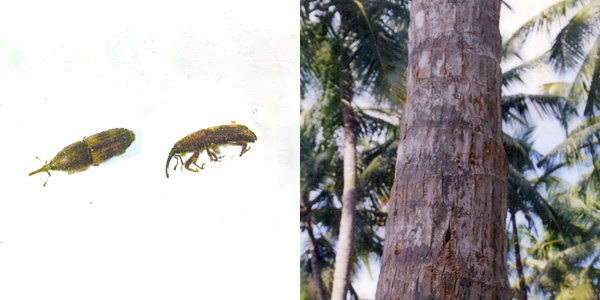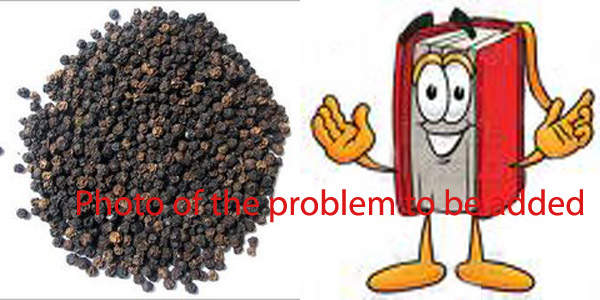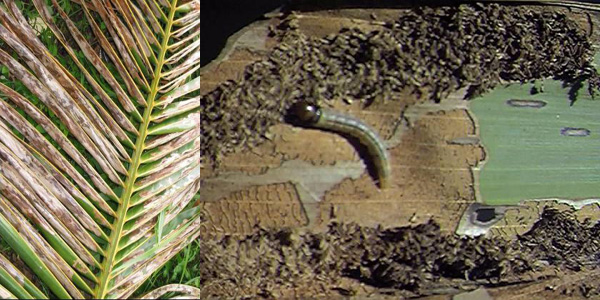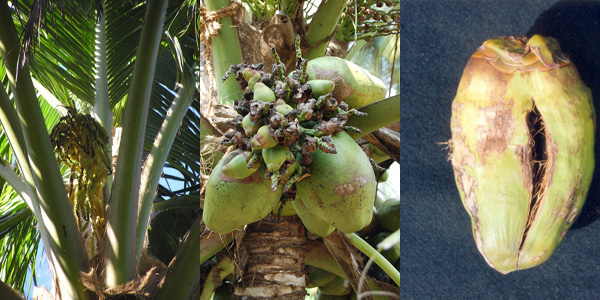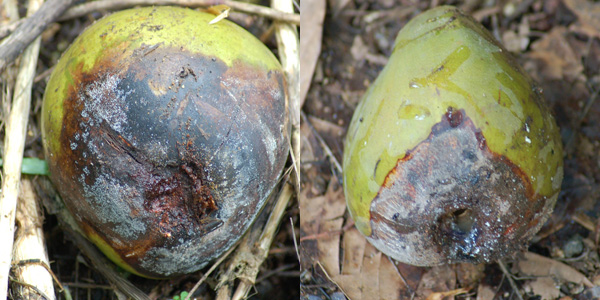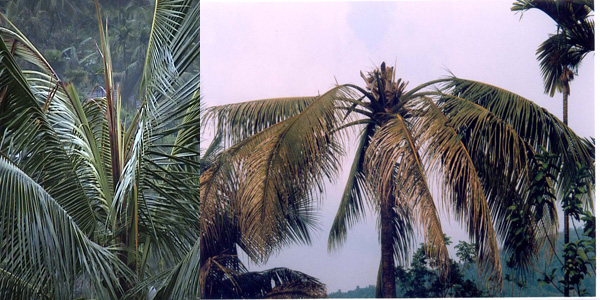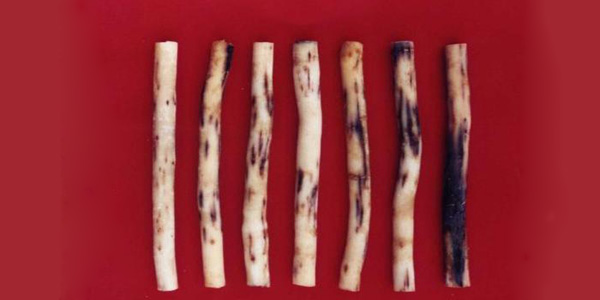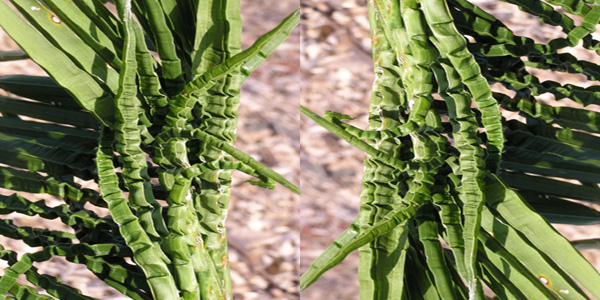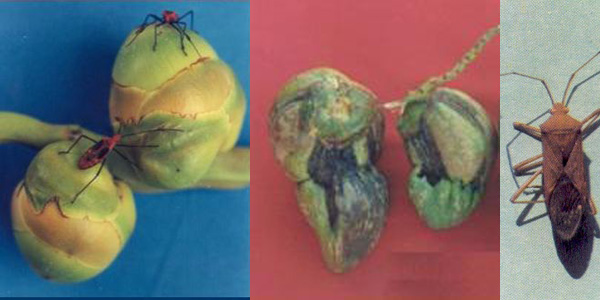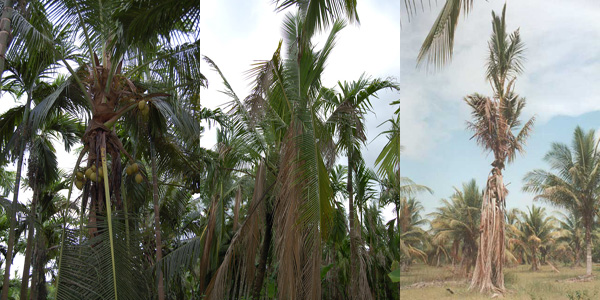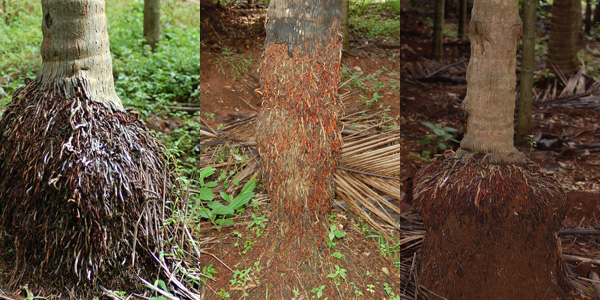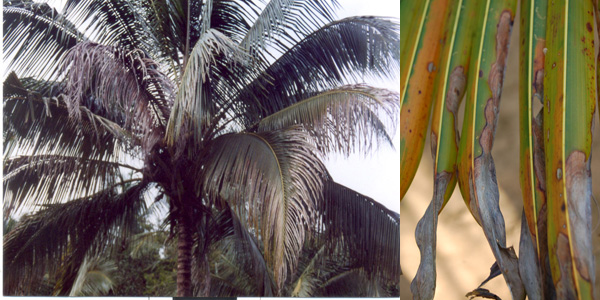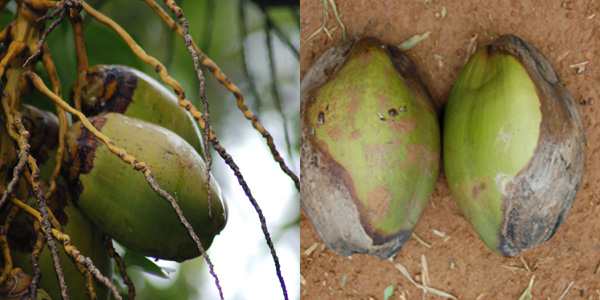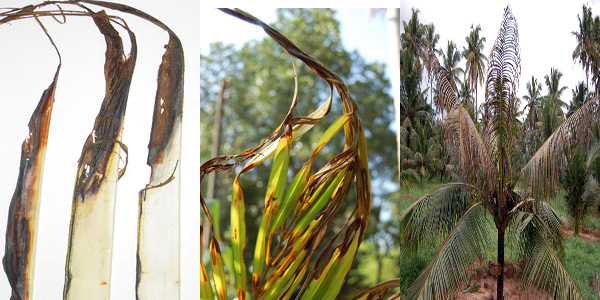|
Importance of the
problem |
Calcium is an element needed for maintenance of cell wall
constituents. It neutralizes the soil from the ill effects of
acidity and creates an atmosphere conducive for plant growth. Soils
with good organic matter contents rarely exhibits calcium
deficiency. However, in modern cultivation calcium deficiency is
common. Therefore, proper management methods need to be adopted
based on soil test reports. |
|
Common signs and
symptoms |
- The first symptom appears on
younger leaves and even on the spears, with the occurrence of
round yellow spots, becoming brown in the centre. These spots
appear isolated at first, become coalescent, and finally dry
out. Severe distortion of leaflets and leaves also occur
- In addition to the easily
visible symptoms on the leaves, abnormalities also occur in the
root system of all coconut varieties. Root systems had a low
number of primary roots, and most of them will rot at severe
deficiency including secondary and tertiary roots
|
|
Problems with similar
symptoms |
The symptoms are very much characteristic of the problem and can be
easily distinguished from other problems. |
|
Causal organism and
their spread |
Calcium deficiency can be caused by one or more of the following:
- Small amounts of available Ca in soil (degraded, acid, sandy soils)
- Alkaline pH with a wide exchangeable Na:Ca ratio resulting in
reduced Ca uptake. Use of irrigation water rich in NaHCO3.
- Wide soil Fe:Ca or Mg:Ca ratios resulting in reduced Ca uptake.
- Excessive N or K fertilizer application resulting in wide NH4:Ca or
K:Ca ratios and reduced Ca uptake.
- Excessive P fertilizer application, which may depress the
availability of Ca (due to formation of Ca phosphates in alkaline
soils).
|
|
Mechanism of damage |
Calcium is a constituent of Calcium pectates, important cell wall
constituents also involved in bio-membrane maintenance. It helps in
cell wall stabilization as an enzyme activator, in osmo-regulation,
and in the cation-anion balance.
Ca is less mobile in than Mg and K. Because Ca is not re-translocated
to new growth, deficiency symptoms usually appear first on young
leaves. Ca deficiency also results in impaired root function and may
predispose the to Fe toxicity. |
|
Ideal management
strategy |
-
Apply organic matter / manure @ 15-25 kg / palm /
year during June – July from 2nd year onwards
The application of organic materials such as forest leaves,
cattle manure, coir dust or coconut shredding at 10 kg per pit
in the first three years and 15-25 kg thereafter will be useful
to obtain better establishment of coconut palms in sandy soils
and in coastal situations
-
Apply the recommended dose of NPK fertilizers for
coconut as per schedule. Under rainfed condition, apply in two
split doses; i.e. 1/3 during April-June and 2/3 during
September-October
-
Apply either Rajphos or Ultraphos as source of P
-
Under irrigated conditions, apply fertilizers in
3-4 equal split doses (April- May, August-September, December,
February-March). In the case of low-lying areas, apply
fertilizers in one single dose after water table recedes or in
two split doses as conditions permit
-
Apply lime @ 1 kg per palm during April-May,
Magnesium Sulphate @ 0.5 kg per palm during August- September
-
The N:P2O5:K2O recommendation given for high
yielding palms is, in general, sufficient for palms yielding up
to 100 nuts per year. For palms yielding more than 100 nuts per
year, supply an additional dose of 10 g N, 5 g P2O5 and 15 g K2O
for every nut exceeding 100 nuts (ad hoc recommendation)
-
In laterite soils, 50% of the K2O requirement of
coconut can be substituted by Na2O supplied in the form of
sodium chloride
-
Recycling of palm waste is very much beneficial especially for
maintaining the availability status of micronutrients and trace
elements. Deposit palm wastes like coconut leaves, crown waste,
dried spathes, husk etc. in a small trench of convenient length,
0.5 m to 0.75 m wide and 0.3 to 0.5 m deep at a distance of
2-2.5 m away from the base of the trunk. Fill up this trench
with the palm wastes along one side of the palm (say north) in
one year, opposite side (south) in the next year, east in the
third year and so on. This practice of organic recycling of
waste has been found to improve the growth and productivity of
the palms
|
|
References |
1. KAU
(2002) Package of Practices Recommendations: Crops, Kerala
Agricultural University, Vellanikkara.
2. KAU (2008) Crop Health Decision Support System (CD), Kerala
Agricultural University, Vellanikkara.
3. CPCRI (2007) Integrated Pest Management CD for Coconut, Central
Plantation Crops Research Institute, Kasaragod
4. CPCRI (2007) Integrated Disease Management CD for Coconut,
Central Plantation Crops Research Institute, Kasaragod
5. Nair, M.RG.K and Visalakshi, K (1999) A Monograph on Crop Pests
of Kerala and their Control, Kerala Agricultural University,
Vellanikkara. |
